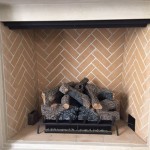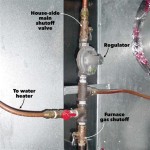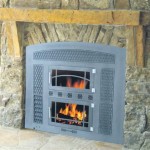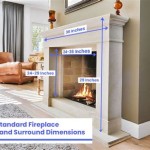Gel Fuel Fireplace Insert Reviews: A Comprehensive Guide
Gel fuel fireplace inserts offer a ventless alternative to traditional wood-burning or gas fireplaces, providing a source of supplemental heat and ambiance. These inserts utilize a gel fuel, typically composed of isopropyl alcohol, which burns cleanly and produces a realistic-looking flame. Understanding the nuances of these inserts, including their advantages, disadvantages, and available options, is crucial for making an informed purchasing decision. This article provides a comprehensive overview of gel fuel fireplace inserts, examining key features, performance characteristics, safety considerations, and exploring various models based on consumer reviews and expert assessments.
Understanding Gel Fuel and Its Properties
Gel fuel is the defining characteristic of these fireplace inserts. The fuel itself is a viscous substance, usually packaged in cans or cartridges, designed for easy loading and ignition. The primary component of gel fuel is typically isopropyl alcohol, although formulations may vary slightly between manufacturers. Upon ignition, the alcohol vaporizes and burns, producing a flame that mimics the appearance of a wood fire. The burn time for a single can of gel fuel can range from two to three hours, depending on the size of the can and the flame height.
One of the key advantages of gel fuel is its clean-burning nature. Unlike wood, gel fuel produces no smoke, ash, or soot. This eliminates the need for a chimney or venting system, making gel fuel inserts a viable option for apartments, condominiums, and homes without existing fireplaces. The combustion process primarily yields water vapor and carbon dioxide, both of which are released into the room. While carbon dioxide is produced, the levels are generally considered safe for well-ventilated spaces.
However, it's important to acknowledge potential drawbacks associated with gel fuel. The cost of gel fuel can be higher compared to other fuel sources, such as natural gas or firewood. Moreover, while the flame is aesthetically pleasing, the heat output of gel fuel inserts is generally lower than that of traditional fireplaces or electric fireplaces. The heat produced is typically suitable for warming a small area but may not be sufficient for heating an entire room or home.
Another consideration is the odor produced by gel fuel. While typically faint, some users may find the alcohol-based scent objectionable, especially during ignition and extinguishing. Choosing a high-quality gel fuel can minimize this odor. Furthermore, proper ventilation is crucial to prevent the buildup of any potentially irritating fumes.
Key Features to Consider When Choosing a Gel Fuel Fireplace Insert
Selecting the right gel fuel fireplace insert involves evaluating several key features to ensure it meets individual needs and preferences. Factors such as size, design, heat output, safety features, and overall aesthetics should be carefully considered.
Size and Dimensions: The physical dimensions of the insert are paramount, ensuring it fits properly within the existing fireplace opening or designated space. Careful measurements are crucial to avoid purchasing an insert that is too large or too small. Consider the depth of the insert as well; some models may protrude further than others, impacting the overall look and feel of the room.
Design and Aesthetics: Gel fuel fireplace inserts are available in a wide range of styles, from traditional to contemporary. Choose a design that complements the existing decor of the room. Some inserts feature intricate detailing, such as faux brick interiors or decorative logs, while others offer a more minimalist aesthetic. The color and finish of the insert should also be considered to ensure it blends seamlessly with the surrounding environment.
Heat Output: While gel fuel inserts are primarily intended for aesthetic purposes, they do provide some supplemental heat. The heat output is typically measured in British Thermal Units (BTUs). A higher BTU rating indicates a greater heat output. However, even high-BTU gel fuel inserts will generally produce less heat than traditional fireplaces or electric fireplaces. Consider the size of the room you intend to heat and choose an insert with an appropriate BTU rating.
Safety Features: Safety should be a top priority when selecting a gel fuel fireplace insert. Look for models that incorporate safety features such as tip-over switches, which automatically shut off the flame if the insert is accidentally knocked over. Additionally, ensure the insert is constructed from fire-resistant materials to prevent the spread of flames in the event of an accident. It’s also crucial to follow the manufacturer’s instructions for proper fuel handling and storage.
Ease of Use: Consider the ease of operation, including the simplicity of loading and igniting the gel fuel. Some inserts feature push-button ignition, while others require manual lighting with a long-handled lighter or match. The ease of extinguishing the flame is also important. Look for models that include a snuffer or damper to quickly extinguish the flame and prevent fuel spillage.
Examining Popular Gel Fuel Fireplace Insert Models Based on Reviews
The market offers a variety of gel fuel fireplace inserts, each with its own strengths and weaknesses. Analyzing consumer reviews and expert opinions can provide valuable insights into the performance and reliability of different models. The following provides information on several popular models based on widely available feedback; however, it is not exhaustive and continuously changing, so this information should be verified before any purchase decisions.
Model A (Hypothetical): This model is often praised for its realistic flame appearance and ease of use. Consumers appreciate the push-button ignition and the included snuffer, which makes extinguishing the flame quick and easy. The design is generally considered versatile, fitting well with both traditional and modern decor. However, some users report that the heat output is relatively low, making it suitable only for small rooms. The cost of replacement gel fuel is also mentioned as a potential drawback.
Model B (Hypothetical): This insert is known for its high heat output compared to other gel fuel models. It features a larger fuel reservoir, allowing for longer burn times. The design is more traditional, with a faux brick interior and decorative logs. Reviews indicate that the flame is not as realistic as some other models, but the increased heat output is a significant advantage for those seeking supplemental heating. Some users have reported issues with the odor produced during ignition, suggesting the use of high-quality gel fuel or improved ventilation.
Model C (Hypothetical): This is a more compact and portable option, ideal for smaller spaces or those who want the flexibility to move the insert around. The design is minimalist and contemporary, with a focus on simplicity and functionality. Consumer reviews highlight its ease of setup and use. The heat output is lower than the other models, but it's sufficient for creating a cozy ambiance in a small room. The smaller fuel reservoir means more frequent refills, which can be a disadvantage for some users. The inclusion of safety features, such as a tip-over switch, is widely appreciated.
General Considerations from Reviews: Regardless of the specific model, common themes emerge from consumer reviews. The realism of the flame is a frequent topic, with some users prioritizing aesthetics over heat output. The cost of gel fuel is a consistent concern, prompting some users to explore alternative fuel options (albeit cautiously, as using non-approved fuels can be dangerous). Safety is consistently emphasized, with consumers urging others to follow the manufacturer’s instructions carefully and to never leave a burning gel fuel fireplace unattended.
It is essential to consult multiple sources of information, including consumer reviews, expert opinions, and product specifications, before making a purchasing decision. Reading reviews can provide valuable insights into the real-world performance of different gel fuel fireplace inserts and help you choose a model that best meets your needs and preferences. Always prioritize safety and ensure the insert is installed and operated according to the manufacturer’s instructions.
Furthermore, consider the long-term costs associated with gel fuel. While purchasing the insert is a one-time expense, the ongoing cost of gel fuel can be significant. Explore different brands and retailers to find the best prices on gel fuel. Purchasing in bulk can often result in cost savings. Also, be aware of any environmental regulations or restrictions regarding the disposal of empty gel fuel cans in your area.

Real Flame Devin Ventless Gel Fireplace Com

Gel Fireplace Logs Can Transform An Unused Future Expat

Terraflame 25 5 In X Gel Fuel Fireplace The Ethanol Fireplaces Department At Com

Duluth Forge Dual Fuel Ventless Fireplace 32 000 Btu Remote Control Chocolate Finish 170158 The Home Depot

Terraflame

Flex 122by Bay Fireplace Insert Ecosmart Fire

Mid Mod Gel Fuel Fireplace

ᑕ❶ᑐ Fireplaces Are Heading Into Tech What S New Here

Real Flame Devin Ventless Gel Fireplace Com

Best Buy Real Flame Cau Corner Gel Fireplace Indoor Usage Heating Capacity 2 64 Kw White 5950








